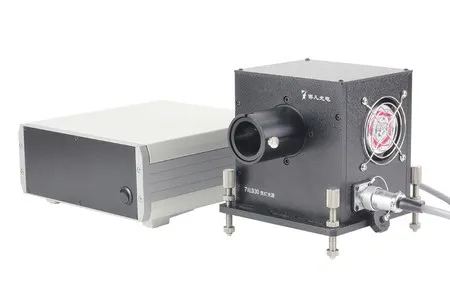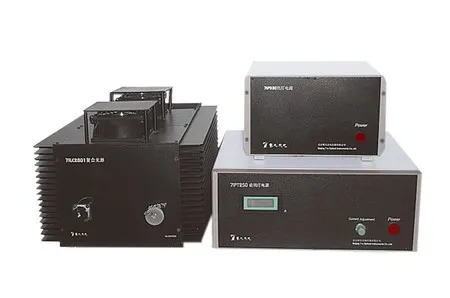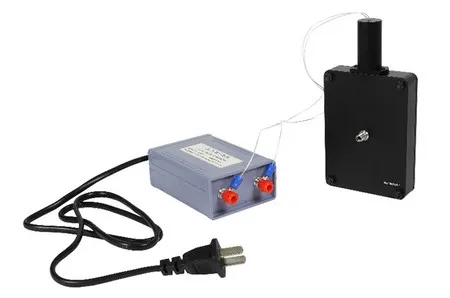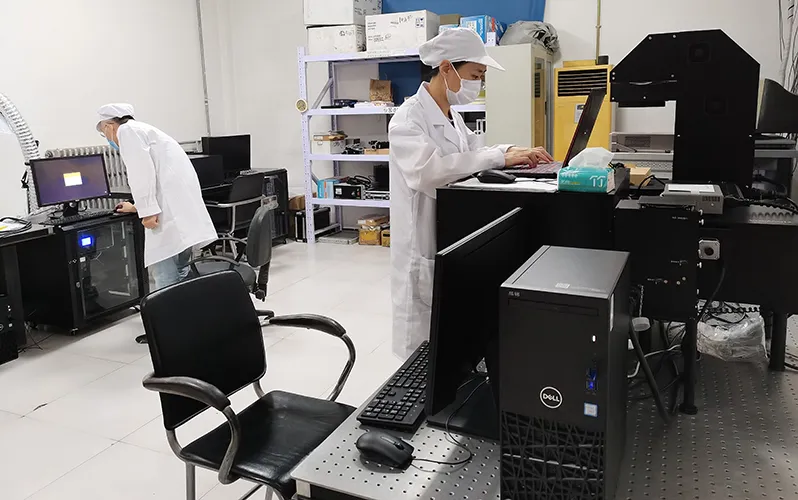Light Sources
Our deuterium lamp house is designed for ultraviolet (UV) and vacuum ultraviolet (VUV) applications, reaching as low as 195nm. Notably, its brightness increases with shorter wavelengths, surpassing standard halogen tungsten lamps below 360nm.
Product DetailsBy integrating both the deuterium lamp and halogen tungsten lamp into a single chamber, our composite light source allows for simultaneous or separate ignition.
Product DetailsThe Xenon lamp's broad spectral range, spanning UV, visible, and near-infrared wavelengths, renders it indispensable for various applications such as fluorescence spectroscopy and medical imaging research.
Product DetailsMercury discharge lamp with cold cathode low-voltage for precise wavelength calibration of monochromators
Product DetailsThe main body of the 7-L series wavelength adjustable monochromatic light source is comprised of a broad spectrum light source (deuterium lamp, halogen lamp, xenon lamp, or composite source) and a wide spectral monochromator.
Product DetailsThe EL series He-Ne high stability polarization laser is engineered to fulfill stringent demands for polarization, low noise, stability, and longevity in precise laser measurements.
Product DetailsOur company manufactures the 7ILT series tungsten halogen light source housing, featuring an OSRAM bulb and socket imported from Germany, ensuring long service life. Users can easily replace the bulb themselves.
Product DetailsLight source plays a pivotal role in photoelectric instruments, defining crucial parameters such as luminous flux, illuminance, luminous intensity, and more.
- Luminous Flux Luminous flux represents the total optical power emitted by a light source in all directions over time. It's measured in lumens (lm), indicating the amount of light energy emitted.
- Illuminance Illuminance refers to the luminous flux received per unit area and is measured in Lux (lx). It quantifies the brightness perceived on a surface illuminated by a light source.
- Luminous Intensity Luminous intensity measures the luminous flux emitted within a unit solid angle and is expressed in Candela (cd). It indicates the brightness perceived from a specific direction.
- Luminance Luminance characterizes the brightness level on a surface and is measured in Candela per square meter (cd/m²). It accounts for the luminous flux reflected from or emitted by a surface.
- Spectral Power Distribution Light from a source comprises radiation with various wavelengths, each with different power levels. The spectral power distribution describes how the radiant power is distributed across different wavelengths.
- Black Body A theoretical concept used as a standard for studying thermal radiation. While true black bodies don't exist in nature, they represent ideal objects that absorb all incident electromagnetic radiation and emit radiation based solely on temperature.
- Color Temperature Color temperature describes the color appearance of light emitted by a source compared to that of a theoretical black body at a particular temperature. It's measured in Kelvin (K) and provides insight into the perceived color of the light.
- Color Rendering Color rendering evaluates how accurately a light source renders colors compared to a reference standard. It quantifies the ability of a light source to reveal the true colors of objects under illumination, influenced by its spectral power distribution.
 Optical measurement systems
Optical measurement systems








